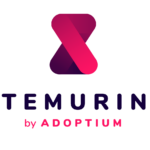The Helios release train has left the Eclipse station right on time, carrying cargo that includes new packages of tools and a marketplace client to provide an “app store” experience for developers.
A new Linux IDE package makes the experience easier for developers creating C and C++ applications, as it takes work out of the command line, explained Eclipse Foundation executive director Mike Milinkovich. The foundation pointed to data from its new community survey that showed Linux is increasingly the platform choice for its developers.
Meanwhile, a new JavaScript package is designed to make Web application development simpler. Milinkovich said the effort is looking to repeat the success of the PHP package.
The new Eclipse Marketplace offers a mix of open-source and commercial downloads. Milinkovich said that the Eclipse Marketplace does not handle the e-commerce aspects of a marketplace, such as transactions. It instead redirects users to a vendor’s site. It is accessible via a new client that makes installation easier.
“We’re looking forward to seeing how the marketplace changes the ecosystem,” he said. “Through the marketplace [client], developers can download and install plug-ins right from the Workbench.”
The foundation neither certifies plug-ins, nor rates or recommends them, but it does do error tracking, and will shut off access to a plug-in and ask the supplier to fix it if it has sufficient problems, Milinkovich explained. “We don’t try to pick winners,” he said.
Milinkovich lauded the effort of the Eclipse community for bringing in the Helios release on time. The release includes updates to 39 Eclipse projects and involves more than 33 million lines of code, he said.
“Not many software organizations say they’ve hit their delivery dates seven years in a row,” he said. “The release train continues to grow and continues to be a great mechanism to bring Eclipse into new areas.”
Milinkovich said a big part of the success of Eclipse has to do with its releases being predictable. “It helps companies adopting Eclipse to build products upon it with confidence,” he said.
He also said that Eclipse’s success is tied to the success of Java, and Oracle’s acquisition of Java creator Sun Microsystems “hasn’t changed the direction of the Java ship at all.” While he said the acquisition has had very little impact on Eclipse, he said Oracle “needs to take steps to ensure the Java ecosystem continues to innovate, and to pick up the pace of innovation.”
For the future, Milinkovich said he sees modeling becoming increasingly important for large-scale engineering projects, especially those that are safety-critical. Other areas where he sees growth opportunities for Eclipse are in runtimes, with the OSGi-based Gemini; the embeddable Jetty Java Web server; and Virgo, a lightweight Java server that used to be known as the SpringSource DM Server.
“These projects are just getting started,” Milinkovich said, “but a year from now, we would expect them to be part of the next release train.”
What’s aboard the Helios release train
The Linux IDE package consists of the new Linux Tools project. That includes Eclipse integrations of Linux utilities, such as GNU Autotools, Valgrind, OProfile, RPM, SystemTap, Gcov, Gprof and LTTng.
Support for the open-source distributed version control system Git is provided by new Eclipse projects EGit and JGit. EGit 0.8 includes a new Git repository view, and support for fast-forward merging and tagging. JGit 0.8, which lives under the covers of EGit 0.8, has 50% greater performance improvement when working with large repositories.
The Web Tools Platform project introduces support for creating, running and debugging applications written for the latest Java EE 6 specifications, including Servlet 3.0, JPA 2.0, JSF 2.0 and EJB 3.1.
The JavaScript Development Tools project includes a debug framework that allows for the integration of JavaScript debuggers, such as Firebug and Rhino. The new JavaScript package makes it easier for developers to find, install and use an Eclipse-based IDE.






